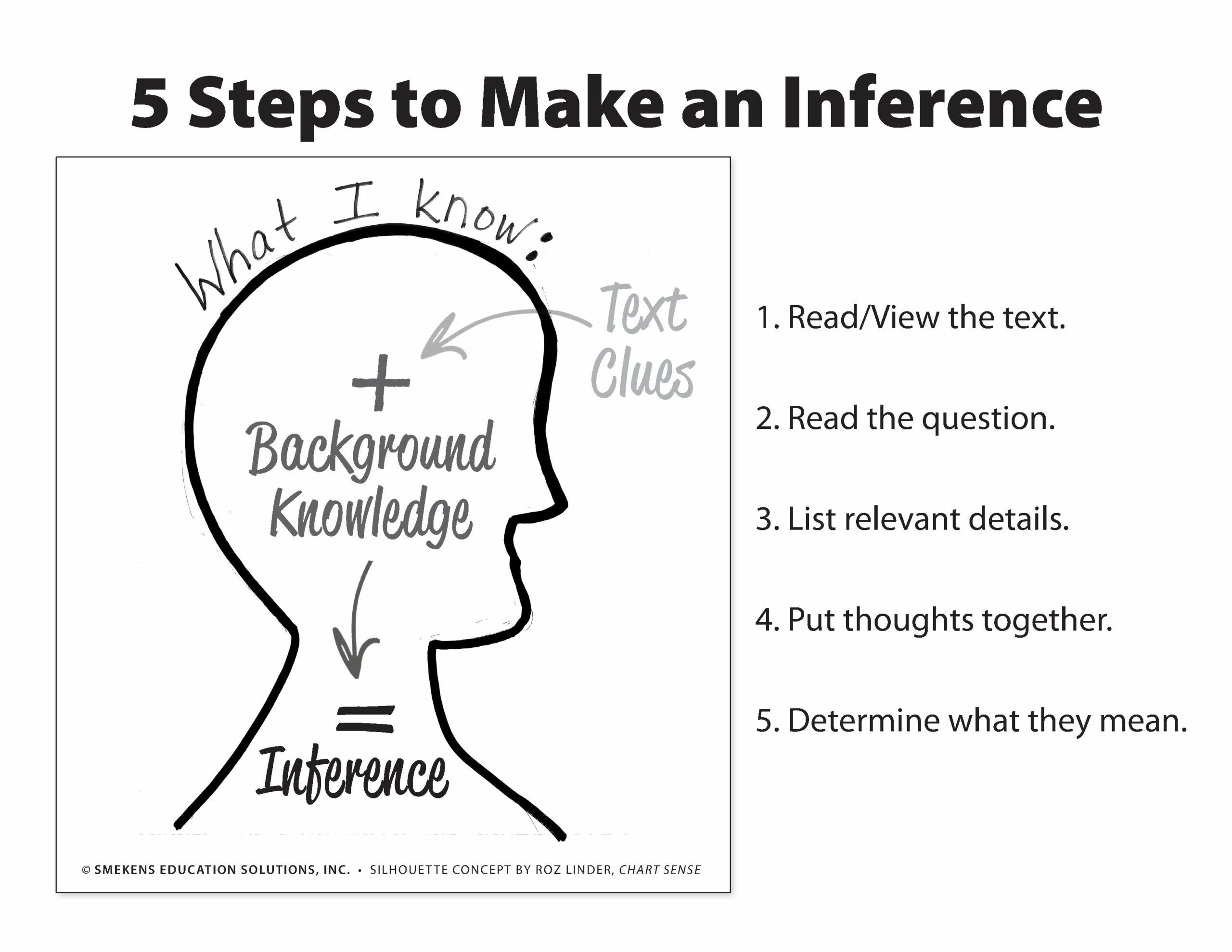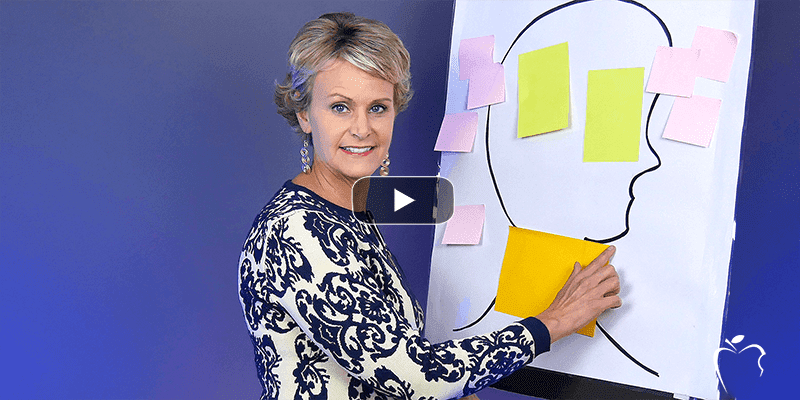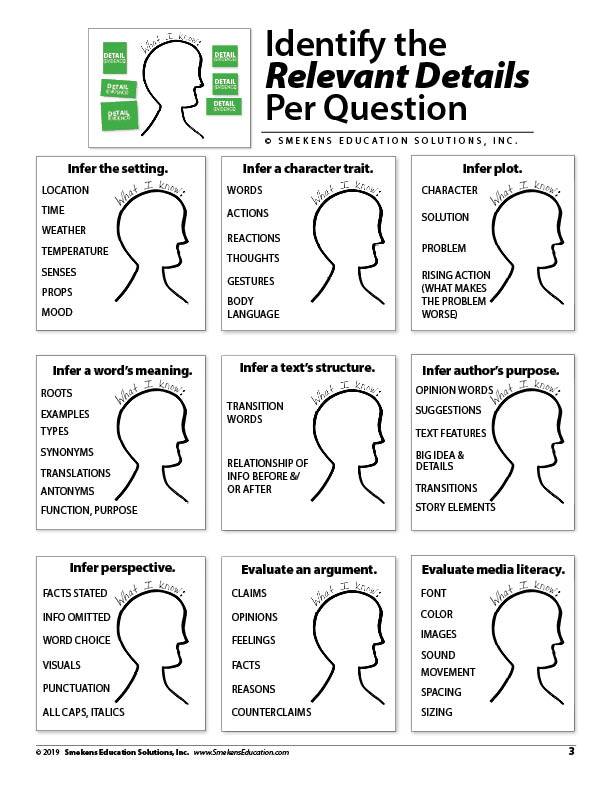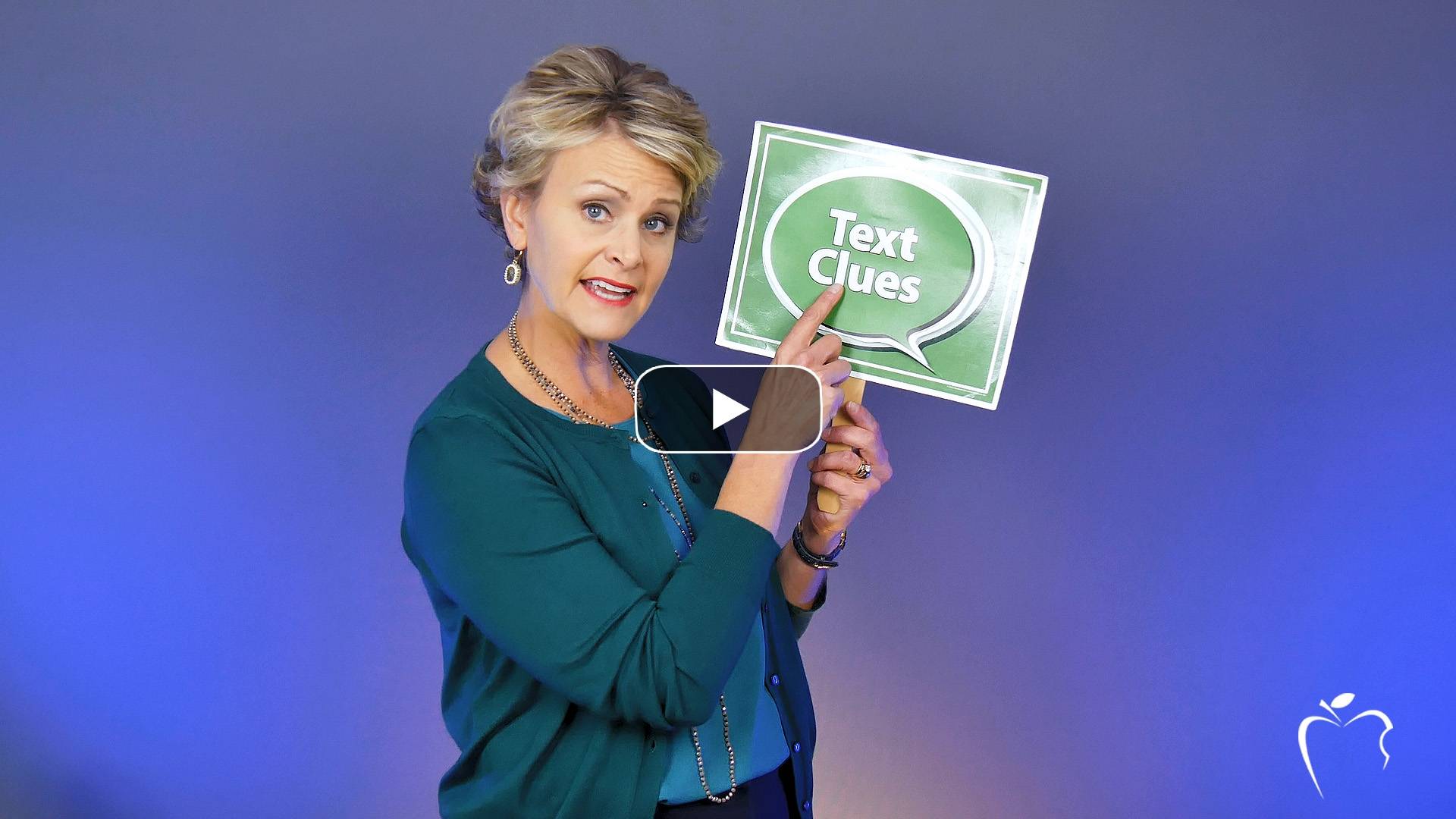Learning Center
Tie every comprehension lesson to the Inference Silhouette
Regardless of whether students have to make a prediction, analyze a character trait, determine the main idea, or identify the theme–they will arrive at the answer by executing the exact same reader process every time. They will make an inference by combining relevant textual details with their own background knowledge using Roz Linder’s silhouette organizer from her book Chart Sense.
To reinforce that all reader thoughts are inferences, the 5-step process and coordinating silhouette organizer should be used as the starting point for every new comprehension skill you plan to teach this year. (Draw the Silhouette Head on chart paper, or show your Reading Voice and Thinking Voice thoughts on the Smekens oversized 32” x 27” poster.)
Day 1 of the mini-lesson series
 On the first day of a new comprehension target skill, announce that you will teach students another way readers think about the texts–another way to infer.
On the first day of a new comprehension target skill, announce that you will teach students another way readers think about the texts–another way to infer.
Since all thoughts are inferences, then reference the already-familiar silhouette organizer and the 5-step process.
After reading a passage or excerpt, help students to collect the textual details that are relevant to make this kind of unique inference. Spend time slowly collecting details on sticky notes, adhering them to the outside of the silhouette, and putting them together to answer the question.
Days 4-5 of the mini-lesson series
By midweek, this “new” skill isn’t so new anymore. Therefore, pull back on the teacher support and gradually release students to do more of the work.
The silhouette head–although a concrete way to capture their thinking initially–is not a long-term tool. We don’t want students to rely on this organizer for the rest of their lives!
One option is to replace the silhouette organizer and sticky notes with in-text annotations. Show students how to underline or highlight text clues (Step 3), draw arrows or lines, consider how they go together (Step 4), all to note what they mean in the margins (Step 5).
Another strategy is to stand in front of the class (after asking an inferential question) and represent the text details students mention by noting them in the air (Step 3). Then, move onto Step 4 and pretend to group these same details in the air. Ask students how they fit together and what they mean (Step 5).
Although the 5 steps of making an inference and Roz Linder’s silhouette organizer kick off each new comprehension skill, the ultimate goal is to train students’ brains to “hold” the bulk of this thinking in their heads.






